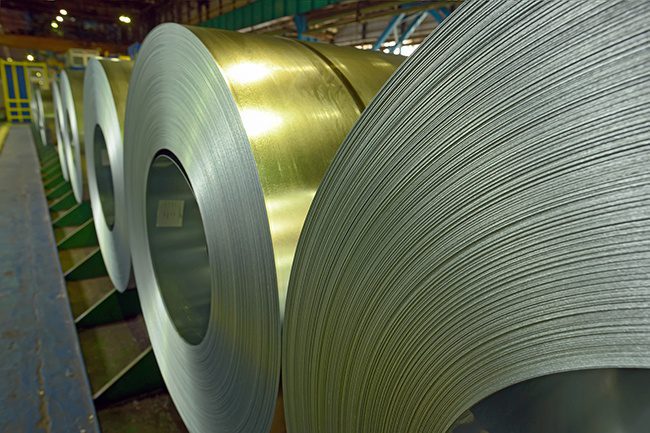Quality Control: Know Your Steel

The absolute last thing you want in a fabrication project is for a steel structure to fatigue and fail. Quality steel could be the secret to successfully avoiding this. However, quality steel is much more than meets the eye.
Problems that arise during manufacturing can range from a line of weakness created when the surface becomes folded and rolled into channels called seams to impure and improper measurements of base metals nickel, copper or lead added to the iron and carbon to create the steel. Compromised quality of steel can and will cause welds to fail. A successful steel fabricator must use quality steel to successfully avoid this.
Materials Certification
Inspection forms an integral part of quality control. Its purpose is to check that the requirements of the specification are being complied with and to provide a report with proper records to the client. Checking the processes, procedures and materials required for the manufacturing of steel structures is vital. A simple error in one operation may not be easily detected after the next operation has been completed.
Durability can be significantly reduced if not rectified immediately.
Structural steel inspections begin before your steel is touched in the fabrication process. The material traceability is thoroughly checked before work begins. An inspection is also performed on each cut, in addition to work performed during fabrication like drilling, beveling, and welding. This will help ensure that these components are durable, safe, and will perform according to their designed specifications.
Traceable Material
Material Test Reports, or MTRs, are used to trace good quality steel back to its origin. Steel mills test the materials as the steel is manufactured to supply these MTRs. It is extremely important that these tests are accurate.

Poor quality steel can present problems during the processing, fabrication and subsequent service of metal components. “Different levels of carbon and other chemicals can change the welding requirements of the base metal,” explains Nick Nijakowski, Certified Welding Inspector with Swanton Welding. “The base metal and weld metal must be chemically compatible.”
The MTR must contain the following information: steel mill’s name, heat number, batch number, final test result, steel pipe dimension, quantity, steel grade, standard/specification, chemical analysis composition results, mechanical test properties results.
Seams and Laps
The major concerns in steel quality are seams and laps. These are longitudinal base metal discontinuities. “When these run perpendicular to the applied stress they can become cracks,” according to Nijakowski.
“Welding over them could result in additional cracking.” Delamination and laminations are other mill style defects. These are defects of the composite material that causes layers to separate with significant loss of mechanical toughness. Defects are detected either through visual inspection or with the help of instruments and equipments.
Selecting Your Steel Fabricator
The construction industry already faces many challenges. These include everything from translating your design into an actual build to making sure you partner with companies that provide you with high quality materials. You want a structural steel fabricator that uses stringent inspections along with checks and balances to provide quality steel for your project. Contact Swanton Welding for more information on our quality standards, and how we can help with your project’s success.

